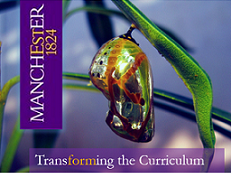Which Is Preferable ? Prevention Education Or Natural Calamity? By Weijia Zhang
When seeing the phrase “Education for Sustainability”, the first scene comes into my mind must be the first time I watched the video with my classmates in 2008 after the terrific earthquake in Wenchuan, Sichuan Province in China. Surprisingly, the video was not about the magnitude of the earthquake, it was just a simple and short video, which was the earthquake-precaution educational video.

But why did that video impress me a lot? I figure that just because of the timing it occurred. I can still remember it was in May, the earthquake was totally shocked everyone in our school, even in the whole nation, for its huge post-disaster destruction and terrific casualties.
Even several thousand kilometers away from the center of the earthquake, we could still feel its horrible power. From that video, I firstly know that if with sufficient preparedness and accident prevention measures, we would not lose such a lot, which was also the first time I realized the importance of education for sustainability, not only physical, but mental.
It can be found that teenagers’ earthquake precaution education is attached more and more importance by schools in Japan. As we all know, Japan is an earthquake-prone country, but the number of casualties caused by the earthquake is not so much. Why does this happen? The main reason is Japan’s primary and secondary schools’ earthquake disaster prevention education.
September 1st is Japan’s “Disaster Prevention Day”. In Japan, 75% of primary school students believe that “there would be near a major earthquake in the near future,” 90% of people say, “the most worried disaster is the earthquake.”(Chen, et al 2012) But what the fear causes is not a panic, but the crisis consciousness and action even from a baby (Mimura et al, 2011). The Japanese have a strong sense of crisis and fear of earthquakes in natural disasters. But the professional system of disaster prevention education transfers the fear into a sense of crisis and emergency.
To start with this topic, I watched nearly every video about how school and society in Japan organizes the emergency earthquake drills in their daily learning and lives as a routine. I also collected lots of materials about other ways for Japanese government to do the preventions for different kinds of natural calamities. After having a basic understanding, I found that Every schoolchild in Japan will be familiar with earthquake drills in which alarms sound and children retreat under their desks to shelter from falling debris. The drills take place every month, with the children being taught to go head-first under the desk and cling to table legs until the quake is over (Foster, 2011).

From that I know that earthquake experience is not the prime factor to enhance awareness. Education, when it is confined to school education, can provide useful information as the knowledge base for earthquake (Shiwaku et al 2007). So I regard it as a kind of education for sustainability.
Education for Sustainability is a term describing the practice of teaching for sustainability (Kaur, 2016). We live in the society, on the earth. There is nobody on this planet who can predict that what day will be the end of our lives, so sustainability matters even for our tomorrow.
As a teacher, it is far away from enough to only give students knowledge or some practical abilities. To guide them realize the awareness of hoe to sustain a better life will be of more significance (Sterling & Huckle, 2014). Back to our topic, we can find that if children have the awareness from a young age, and being very familiar with what will happen when calamity comes, they would be more likely to calm down. From the experience of Japan’s education for sustainability, I think it would be better for other countries especially developing counties with frequent natural calamities to do the similar educational application for young children.
Education for Sustainability brings a new perspective to education, which helps people of all ages to better understand the world of their lives and understand the complexity and interrelations of issues that threaten the future of mankind, such as poverty, waste, environmental degradation, urban degradation, population growth, health, conflict and human rights violations.
This new vision of education emphasizes a holistic, interdisciplinary approach to developing the knowledge and skills needed for a sustainable future, as well as changes in values, behavioral patterns and lifestyles. This requires us to reorient the educational system, policy and methods so that everyone can make decisions and actions in a manner consistent with local culture and circumstances to tackle the problems that threaten our common future. After all, whatever ways of sustainability, even environmental sustainability, or economic sustainability, all contribute to the development of our society with a brand new but healthy perspective for the continuity of life.
Now what do you think about the answer of the intended question of my title for this blog?
References
Chen, C. Y. et al (2012). Planning of professional teacher-training program for disaster prevention education and executing efficiency evaluation. Disaster Prevention and Management: An International Journal, 21(5), 608-623.
Foster, P. (2011) Japan earthquake: country better prepared than anyone for quakes and tsunamis. The Telegraphs.
Kaur, R. (2016). Education for sustainability. ACADEMICIA: An International Multidisciplinary Research Journal, 6(3), 169-173.
Mimura, N., et al (2011). Damage from the Great East Japan Earthquake and Tsunami-a quick report. Mitigation and Adaptation Strategies for Global Change, 16(7), 803-818.
Shiwaku, K.et al (2007). Future perspective of school disaster education in Nepal. Disaster Prevention and Management: An International Journal, 16(4), 576-587.
Sterling, S. & Huckle, J. (2014). Education for sustainability. Routledge.

